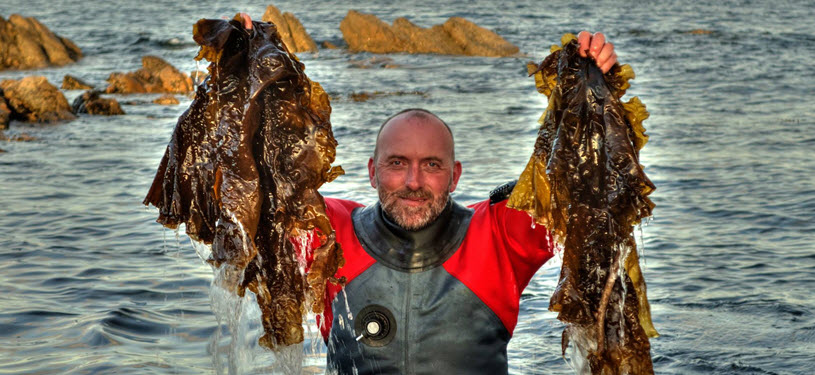
When in Rome, do as the Romans do. Well, the Isle of Harris, isn’t quite Rome but, when you’re a start up distillery and you live on an island with a total population of 1,916 men, women and children surrounded by water, apparently, you use kelp to make gin while waiting for your whisky.
The folks at the Isle of Harris Distillery are applying their whisky making skills to producing a new island gin. They looked to the land and sea for the botanicals to make their newest spirit and found seaweed!
Stay Informed: Sign up here for our Distillery Trail free email newsletter and be the first to get all the latest news, trends, job listings and events in your inbox.
Their journey towards making an Isle of Harris gin began back in the winter of 2013 when ethnobotanist Susanne Masters produced a special research paper, investigating the how, where and why of ingredients to combine in this first spirit. As an ethnobotanist, Susanne was interested in the relationship between people and plants, something historically intrinsic to life in the islands.
Casting her eye over croft and moor, Susanne soon turned to Silverweed, Heather, Lady’s bedstraw, Meadowsweet, Bog myrtle, Sphagnum moss and clovers of white and red, considering carefully their characteristics and ecology in the context of the distillery plans, weighing conservation practices with the practicality of harvesting sustainably for a new gin. But it was towards the sea her searching gaze was finally fell.
Seaweed harvesting has been a significant mainstay of crofting, often providing a means to fertilize the soil. One particular species, Sugar kelp, is a true Hebridean seaweed found in underwater forests all around the island. As expected for a seaweed, it holds a salty flavor element but crucially, as indicated by the name, it is also sweet due to the presence of a substance called mannitol (named after the biblical foodstuff manna).
And so Saccharina latissima became the focus of their attention. Growing in deep abundance around the shores and hand-harvestable by traditional methods, it’s a most environmentally friendly ingredient when taken carefully from the seas by local gatherers.
So, when in Rome do as the Romans do. When surrounded by seaweed, use seaweed to make your first craft spirit gin. The first craft spirit batch will be available later this year.
The Isle of Harris Distillery Under Construction







